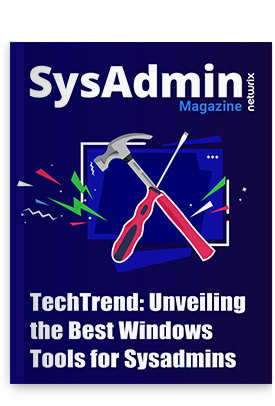Now that almost every business relies heavily on stable IT operations, there is a constant need for professional computer systems administrators to maintain and manage computer networks. Today, sysadmins are superheroes that keep the business running, so the job it is not for the faint-hearted. But if you are ready start down the path to a system administrator position, success won’t be far away.
This blog explains the five steps for how to become a system administrator. You’ll discover what you need to know, what degree and skills you should acquire, and how you can get a job.
Step 1. Earn a bachelor’s degree and build tech skills.
You might sigh, exclaiming, “higher education in IT is outdated!” But it truly is not. The lion’s share of employers accept applicants for systems administrator position only if they have a bachelor’s degree in a computer-related major, such as computer science, electronic engineering or computer engineering, and have three to five years of experience. While earning a four-year degree, you’ll nail down the basics, like various programming languages, the types and features of different operating systems and networking services, how to do database and systems analysis, what’s involved in systems design and so on. Be sure to explore opportunities through your school to do internships; they will help you build a strong professional network and be a more attractive candidate when you graduate.
However, since technology changes much faster than textbooks, the path to becoming a system administrator also requires constant self-education. You should make it a habit to learn about emerging trends in the field on your own: which operating systems and applications are becoming more common, what new approaches there are for efficient hardware and software troubleshooting, what threats to network security are emerging, and many more. Read industry publications and research, ask questions on forums, engage with practicing system and network administrators — there are tons of possibilities to dig deeper. Believe me, it’s fun!
Step 2. Take extra courses to become a system administrator.
To increase your credentials and advance your skills, we recommend getting IT certifications, either during college or after graduation. Such certs are voluntary, but employers often see them as an extra reason to consider your application. Thus, relevant certificates not only help you master your skills of developing and managing computer systems but also increase your chances of getting a job and having a wider range of choices.
There are a lot of great options. We advise you to consider these three common certifications:
Microsoft Certified Solutions Associate (MCSA) certification
Microsoft certifications have three levels:
- MTA (Microsoft Technology Associate) — For absolute beginners who need an understanding of basic technical concepts
- MCSA (Microsoft Certified Solutions Associate) — For those who have core technical knowledge and seek entry-level jobs
- MCSE (Microsoft Certified Solutions Expert) — For experienced IT pros who need skills to build innovative solutions on premises and in the cloud
Once you’ve completed your bachelor’s degree, we advise you to take MCSA courses, since they are focused on the latest technologies for business applications, cloud platforms, data management, analytics, mobility (BYOD) and productivity. Though these courses are not designed specifically for systems administrators, they will help you master the art and science of designing and building solutions using core Microsoft technologies, especially Windows Server.
After finishing the course, you will have to pass two or three exams. To prove that you’ve stayed up to date with latest technologies and are continuing to expand your skill set, you’ll also have to either pass an additional exam once a year or take additional courses.
LPIC-1 Certified Linux Administrator certification
If you want to test your level of Linux knowledge or are eager to work specifically with this operating system, the best option for you is LPIC-1 — the first certification in a multi-level program introduced by Linux Professional Institute. You will learn to work in systems administration by training to perform maintenance tasks using the command line, install and configure a computer running Linux, and configure basic networking.
To graduate, you will have to pass two exams. The certification is valid for five years. To recertify, you will have to pass the tests again or complete advanced certifications before the five-year period expires.
CompTIA Server+ certification
CompTIA is a non-profit trade organization that issues vendor-neutral IT certifications. CompTIA Server+ is a comprehensive and very intensive program. To apply for this certification, you need 18–24 months of professional experience working with server hardware and software. The course helps candidates achieve mastery in seven fundamental fields: server architecture (configuration and support of server components), server administrations (managing and maintaining servers), storage (supporting storage devices), security (physical and network security techniques), networking (configuring systems for network connectivity), disaster recovery (includes backup techniques), and troubleshooting a wide range of issues from hardware to security.
To receive this cert, you must pass one 90-minute exam. The certificate does not have expiration period.
There are many other IT certifications. For instance, if you want to work with Red Hat Enterprise Linux environments, we advise you to earn the Red Hat Certified System Administrator cert. To learn more about other certifications that are valued on the market and have a direct impact on your salary, see this blog post.
Step 3. Develop strong interpersonal skills.
How to be a good system administrator? It requires more than technical knowledge of Windows or Linux environments and mastering tasks like backups – interpersonal skills are just as important.
Since the system administrator is the first point of contact when network problems arise, you should be ready to work under pressure and remain calm. You should also have strong problem-solving and time-management skills, good judgment, and the ability to address issues quickly and efficiently.
Good communication skills are paramount, since you’ll inevitably have to propose ideas, explain your goals and expectations for projects, and educate employees about working with IT assets responsibly. In particular, a good sysadmin knows how to explain complex information to non-IT people. You can craft a complicated or important message into a story to make it more impactful. Let’s say you need to explain to an employee why choosing “Qwerty” for their password does not work for security reasons. You might say that having “Qwerty” as your password means you are being predictable and boring. Who likes predictable and boring people? No one! Except for hackers who can easily compromise you. Be creative when talking to users!
Sometimes people may drive you crazy even though they do not mean it. Just keep it together and watch this video from Lenovo to cool down.
Remember, there are thoughtless users at every company and you are not alone.
Step 4. Get a job.
Before applying for full-time jobs, you should get entry-level experience by doing internships or having part-time jobs first. You can take on junior roles for desktop or tech support helpdesk to understand how everything you studied in theory works in practice. Real-world experience is the best training.
Once you have tested and honed your skills by fire, you are all set for getting an entry-level position as a system administrator or a network administrator, since their roles often overlap. Often, employers look for at least 3–5 years of experience, but you might be able to include your education and internships toward this number. Make use of the contacts you have made in the field; the best way to get a job is through your network. You can also search for positions through LinkedIn, Monster or Indeed, targeting jobs that match your skills and salary requirements. If you are familiar with a specific OS or have a cert in a certain field, make sure to highlight it in your resume.
As you choose between larger corporations and smaller organizations, think twice before rushing for a big brand. You are likely to get more experience in a small company, because they are often short on budget and people; you’ll have to juggle many projects and learn how to do a lot of things simultaneously, so you’ll be forced to improve your automation skills. Choosing a big company puts you at risk of having a narrow area of responsibility and ending up with a less exciting experience.
Step 5. Constantly refresh your knowledge.
Once you’re working and don’t have to Google ‘How to become a sysadmin’ anymore, your path is still not over. It is never over — you must stay up to speed on the latest technology, which changes really fast. Consider joining a professional network, such as the League of Professional Systems Administrators (LOPSA), whose goal is to advance the practice of systems administration and educate its practitioners and the public on systems administration issues. LOPSA provides great educational and networking opportunities through online events and shares helpful information in Slack and through their RSS feeds and mailing lists.
Another goldmine of knowledge for sysadmins is Spiceworks, a huge international community for everyone who cares about the future of IT industry. We recommend you to read posts there, since they contain quite useful educational content and fair product reviews. You can also check out Microsoft Technet and Reddit, though with Reddit, you’ll have to dig through a mass of funny but irrelevant threads, so don’t surf it while you’re at work.
Please let us know if you find these steps for building a career in systems administration useful. And don’t forget to share your own tips in the comments!


